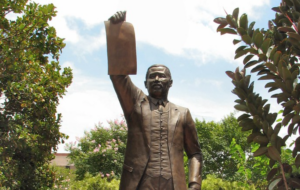TRS Benefit Reductions for Future, No Help in the Present
The Texas Legislative Budget Board (LBB) has released recommendations on how to address the state budget deficit. The entire report can be downloaded by clicking here.
LBB’s report on the Teacher Retirement System of Texas (TRS) and the Employee Retirement System of Texas (ERS) indicates that both funds are not facing a funding crisis like other state pension systems around the country. The report does stress, however, that both TRS and ERS have large, long-term unfunded liabilities that should be addressed by the Texas Legislature.
The report offers three plans on how to resolve the long-term unfunded liabilities:
Plan 1: Have the legislature fully fund the pension trust funds.
Plan 2: Maintain the TRS and ERS defined benefit plan, but implement plan design changes for future retirees to make the current funding levels sufficient to pay for benefits.
Plan 3: Introduce a hybrid plan for new employees (this effectively kills the traditional defined benefit plan for all future TRS retirees).
The LBB report states that the fiscal impact on the current biennial budget crisis will depend on which of the three options (if any) the Texas Legislature chooses to solve this long-term pension funding shortfall.
TRTA Analysis of Recommendations
The LBB recommendations are informative, but lack the specific information that would enable us to know how these plans could impact retired and active TRS members. We can draw some broad conclusions about these suggestions and offer some insight on how TRTA may respond on these varied solvency approaches.
As we provide our thoughts, it is important to state some key facts:
1. 95 percent of all Texas school districts do not pay into Social Security. TRS is the retirement security for hundreds of thousands of public education employees and retirees. Any change to TRS retirement benefits will have a major financial consequence for school employees and all Texans.
2. The overall contribution for TRS benefits is nearly identical to the contribution required by the Social Security program. Changing TRS into a defined contribution or a “hybrid” plan is not likely to save the state any money in the short-term or the long-term.
3. TRS has a large unfunded liability, but this is not because the benefit structure is too rich. Ultimately, the unfunded liability is a product of the weak economy (though TRS is recovering quite well with pension assets that now exceed $105 billion), and the lack of adequate state funding to support the benefit structure (for 12 years, the Texas Legislature contributed the absolute minimum allowed under the Texas Constitution even though legislators knew higher contributions were required).
4. TRS is a major financial engine for the state economy, as well as all Texas local economies. Nearly $6 billion a year is paid out to annuitants who spend these dollars in Texas generating millions in sales tax revenues and creating tens of thousands of jobs in the state.
5. TRS retirees do not have an automatic cost of living adjustment. In fact, TRS retirees have not had a permanent increase in their pension benefits for 10 years. While Social Security, defined benefit plans in the private sector, and other state pension plans around the country have provided these increases, Texas public education retirees have not received one cost of living increase.
The Legislative Budget Board should be credited for pointing out that Texas is not in a pension funding crisis and is in fact, far from it. Our state pension plans are ailing from the soft economy, and we have suffered losses like all retirement systems. TRS investments have helped the fund recover from a low of around $67 billion in February 2009 to a fund value today estimated at $105 billion. Texas pension funds are dealing with a short-term crisis, which may cause many decision makers hearing too much about the economic woes of public pension funds elsewhere to apply those dire standards to our Texas pension funds. TRTA must continue to educate legislators about the good work and strong financial condition of the TRS fund and remind them that we are not in economic free-fall like other funds around the country.
Overview of LBB Recommendation #1: Fully Fund the TRS and ERS pension trust funds
TRTA fully supports the idea that the Texas Legislature should fully fund these systems. At least, we support the idea as we understand it in this report. If Texas were to “fully fund” the retirement system obligations, that would cost billions of dollars in state budgetary outlay. While this is the most ideal solution, expecting Texas legislators to implement a full-funding solution seems impractical.
Pension funds manage their assets with a long-term perspective. This long-term perspective allows the system to manage its liabilities in a way that it does not need to be fully funded, but it should be “actuarially sound.” Currently, TRS is not actuarially sound (meaning that it cannot amortize its unfunded liability within a 31-year period). The Texas Legislature may make a more significant difference for TRS members by developing a funding plan that ensures the pension system’s actuarial soundness. This is a far more attainable and less costly proposition and allows the system to use time as its ally in making wise management decisions with the pension trust fund’s assets.
Overview of LBB Recommendation #2: Implement plan design changes for future retirees to make the current funding levels sufficient to pay for benefits
In 2005, the Texas Legislature adopted plan design changes to bolster the long-term solvency of the pension trust fund. The Legislature did not address funding issues until 2007 when it increased the state contribution by 0.58 percent (at the time, it was the first increase in TRS funding in 12 years). In 2009, the Legislature reduced its contribution to TRS from 6.58 percent to 6.4 percent. The appropriation went up from 6.4 percent to 6.644 percent after retirees were denied a $500 supplemental payment (the money set aside to make the payment to retirees was put into the fund after a ruling made by the Attorney General denied retirees the payment).
This proposal suggests continuing the trend of reduced contributions and deeper cuts in benefits for future retirees. While there can be a healthy debate on plan design costs, it should not be limited to the benefit structure and should include an equally healthy discussion on when the contributions will remain consistently high in order to meet current and future benefit obligations.
Overview of LBB Recommendation #3: Introduce a “hybrid” plan
What is a hybrid plan? While many people will try and answer this question by saying how great hybrid plans are, TRTA answers it by saying what a hybrid plan is not. A hybrid plan is not a traditional defined benefit pension plan like TRS offers now. Hybrid plans are similar to privatized 401(k) plans that allow members to make contributions to a retirement fund and have a degree of self-directed investment planning. Many active educators already have private investment plans that complement their TRS retirement.
There are two major problems with a hybrid initiative in Texas. First, most Texas school employees do not have Social Security. If policy makers believe introducing a hybrid plan will save money, they may not be accounting for the costs of requiring all school employees to enter the federal Social Security program. If Texas were to mandate Social Security coverage in addition to the new “hybrid” TRS plan, the costs would far exceed what the Texas Legislature and school district employees are paying now. If it doesn’t save any money, why do it?
Besides eliminating the current defined benefit plan and really not saving the state or the active employee any money, another glaring problem with some hybrid plan proposals is that they may not include Social Security. This is frightening as few private sector or public sector employees do not pay into either Social Security or some other qualified defined benefit traditional retirement plan. If the Texas Legislature were to adopt some of these more radical and extreme hybrid plan recommendations, Texas school employees would not pay into Social Security and would not have TRS as their traditional retirement plan. This could leave Texas public education employees to retire on only their savings in the new “hybrid” plan. By not having a bedrock defined benefit retirement plan (either TRS or Social Security), Texas would virtually guarantee the financial and retirement insecurity of its public education employees.
TRTA’s core legislative value is the preservation of the current defined benefit pension plan for all retired and active public education employees.
Concluding Remarks
The LBB study focused on reducing long-term unfunded liability costs for the state sponsored pension plans. TRTA believes it is possible to reduce these costs and ensure financial security for all TRS members, but we need to work together on the details to ensure adequate funding for TRS, a solid defined benefit plan for all public education retirees, the preservation of an affordable health insurance program for those wanting to enroll, and the reality of regular pension adjustments for TRS annuitants. These goals are attainable, but it will take a legislature that is committed to dealing with these problems and developing solutions that last longer than a biennium.



